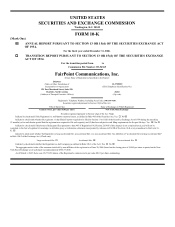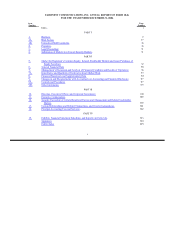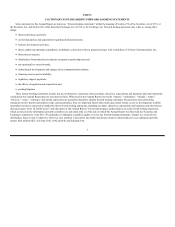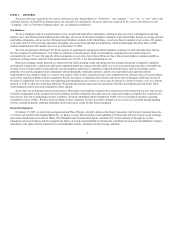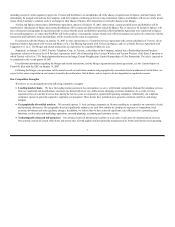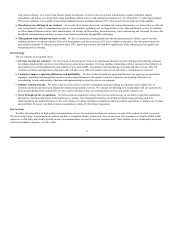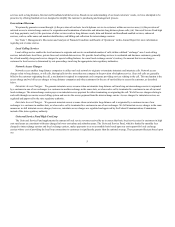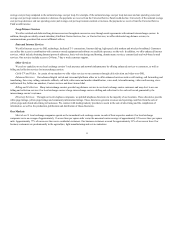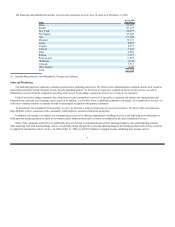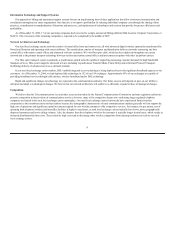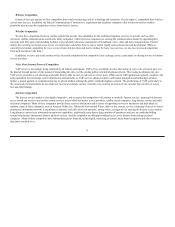FairPoint Communications 2006 Annual Report Download - page 10
Download and view the complete annual report
Please find page 10 of the 2006 FairPoint Communications annual report below. You can navigate through the pages in the report by either clicking on the pages listed below, or by using the keyword search tool below to find specific information within the annual report.
Our approach to billing and operational support systems focuses on implementing best-of-class applications that allow consistent communication and
coordination throughout our entire organization. Our objective is to improve profitability by reducing individual company costs through the sharing of best
practices, centralization or standardization of functions and processes, and deployment of technologies and systems that provide for greater efficiencies and
profitability.
As of December 31, 2006, 17 of our operating companies had converted to a single outsourced billing platform (Mid America Computer Corporation, or
MACC). The conversion of the remaining companies is expected to be completed by the middle of 2007.
Our rural local exchange carrier networks consist of central office hosts and remote sites, all with advanced digital switches (primarily manufactured by
Nortel and Siemens) and operating with current software. The outside plant consists of transport and distribution delivery networks connecting our host
central office with remote central offices and ultimately with our customers. We own fiber optic cable, which has been deployed throughout our current
network and is the primary transport technology between our host and remote central offices and interconnection points with other incumbent carriers.
Our fiber optic transport system is primarily a synchronous optical network capable of supporting increasing customer demand for high bandwidth
transport services. This system supports advanced services including Asynchronous Transfer Mode, Frame Relay and/or Internet Protocol Transport,
facilitating delivery of advanced services as demand warrants.
In our rural local exchange carrier markets, DSL-enabled integrated access technology is being deployed to provide significant broadband capacity to our
customers. As of December 31, 2006, we had deployed this technology in 152 of our 154 exchanges. Approximately 99% of our exchanges are capable of
providing broadband services through cable modem, wireless broadband and/or DSL technology.
Rapid and significant changes in technology are expected in the communications industry. Our future success will depend, in part, on our ability to
anticipate and adapt to technological changes. We believe that our network architecture will enable us to efficiently respond to these technological changes.
We believe that the Telecommunications Act and other recent actions taken by the Federal Communications Commission and state regulatory authorities
promote competition in the provision of communications services; however, many of the competitive threats now confronting larger regulated telephone
companies are limited in the rural local exchange carrier marketplace. Our rural local exchange carriers historically have experienced limited wireline
competition as the incumbent carrier in their markets because the demographic characteristics of rural communications markets generally will not support the
high cost of operations and significant capital investment required for new wireline entrants to offer competitive services. For instance, the per minute cost of
operating both telephone switches and interoffice facilities is higher in rural areas, as rural local exchange carriers typically have fewer, more geographically
dispersed customers and lower calling volumes. Also, the distance from the telephone switch to the customer is typically longer in rural areas, which results in
increased distribution facilities costs. These relatively high costs tend to discourage other wireline competitors from entering territories serviced by our rural
local exchange carriers.
8

